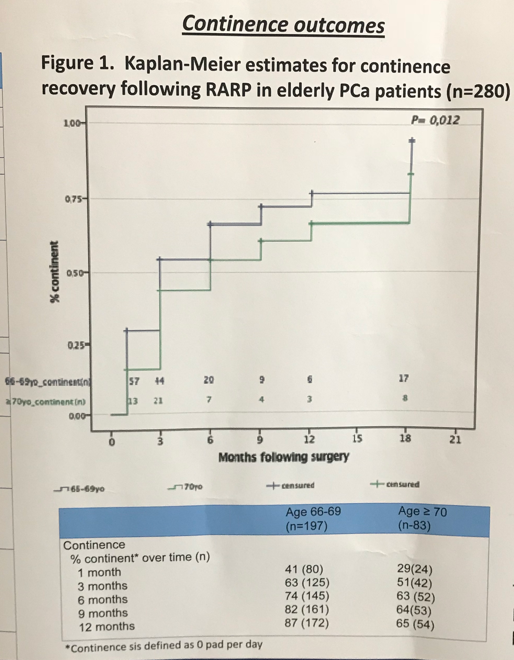To carry out this study, the researchers retrospectively reviewed a prospectively sustained database of prostate cancer patients who underwent RARP at their center between January 2007 and April 2017. Patients were screened as being greater than 65 years of age, then stratified into two groups: age 66-69 years or age ≥70 years. Urinary continence was defined as 0 pads per day while potency was defined as a Sexual Health Inventory for Men (SHIM) score ≥ 20.
Following completion of the study, 280 patients were identified as being over 65. The 66-69 group consisted of 197 patients while the ≥70 group consisted of 83. There was no significant difference between the two groups in regard to median PSA, mean prostate weight, or tumor progression/stage. Additionally, there was no difference in perioperative outcomes such as operative time, intra- or postoperative complications, or mean hospital stay. However, there was a significant postoperative improvement in IPSS which was similar between groups. Impotency rates for the 66-69 and ≥70 cohorts were 61.3% and 58.8%, respectively. This difference between groups was not sufficient for statistical significance. For urinary continence, it was found that patients who were 66-69 years old were more likely to regain urinary continence as compared to the ≥70 years cohort; this difference was statistically significant. The researchers devised Kaplan-Meir estimates for continence which can be seen below.

Presented by Kevin Zorn, MD, Urology, University of Montreal, Montreal, QC, Canada
Co-Authors: Sabrina Harmouch1, Samer Traboulsi1, Félix Couture2, Cristina Negrean1, Mila Mansour1, Khaled Ajib1, Côme Tholomier1, Pierre Karakiewicz1, Assaad El-Hakim1
1Urology, University of Montreal, Montreal, QC, Canada; 2Urology, McGill University, Montreal, QC, Canada
Written by: Zachary Valley, MD, Twitter: @ZacharyAValley, Department of Urology, University of California-Irvine at the 73rd Canadian Urological Association Annual Meeting - June 23 - 26, 2018 - Halifax, Nova Scotia


